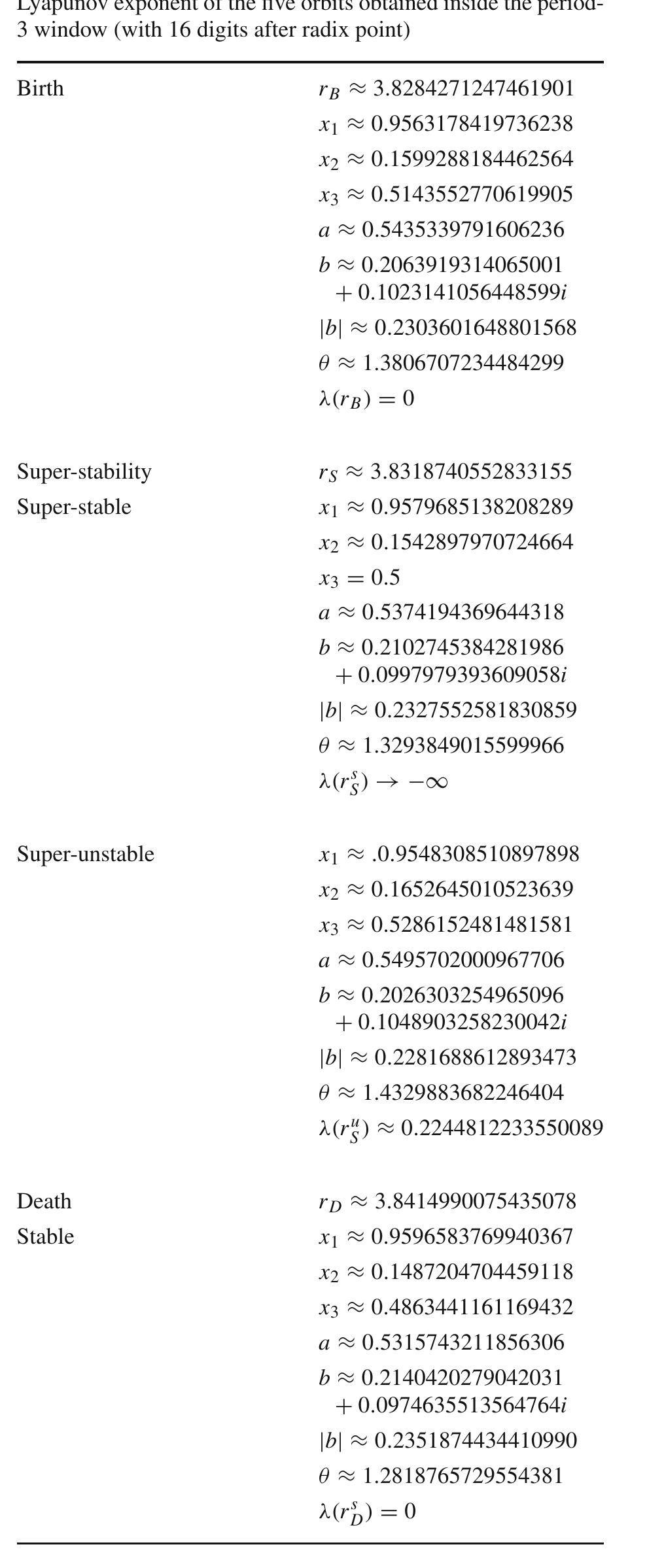Algebraic orbits on period-3 window for the logistic map
https://doi.org/10.1007/S11071-014-1719-0Abstract
Algebraic stable and unstable orbits are presented for the famous period-3 window of the logistic map x n+1 = r x n (1 − x n). It is exhibited the general polynomial that gives rise to both stable and unstable period-3 orbits. These orbits are shown for three different fixed control parameter values of r : at tangent bifurcation (birth), at super-stability and at ending pitchfork bifurcation (death) of the period-3 window. All orbits are exposed in two different ways: a sum of complex numbers x i = a + bc + bc, as proposed by Gordon (Math Mag 69:118-120, 1996), and via Euler's formula x i = a + 2|b| cos(θ). The algebraic expressions of a, b, c, |b| and θ are given for each r value for both stable and unstable orbits, as well as their numerical values and the Lyapunov exponent. It is shown that a and |b| are statistical quantities of the orbits.
FAQs
AI
What explains the significance of the period-3 window emergence in logistic maps?
The period-3 window is the last periodic orbit to appear, indicating a transition to chaotic behavior, as shown by its critical role in Sharkovskii's ordering, which was established in 1963.
How are stable and unstable period-3 orbits identified mathematically?
Both stable and unstable period-3 orbits arise from the roots of a polynomial of degree six, which is factored into stable and unstable components, with specific parameter values yielding their properties.
When does the period-3 orbit lose stability in the logistic map?
The period-3 orbit loses stability at the control parameter value r ≈ 3, following a pitchfork bifurcation that generates the chaotic regime and leads to further bifurcations.
What method determines the algebraic roots for period-3 orbits?
The method involves solving an eighth-degree polynomial, where roots are expressed using complex numbers in polar form, ensuring they yield real values consistent with the periodic orbits.
How do statistical properties of period-3 orbits vary with the control parameter?
The mean value and standard deviation of x in period-3 orbits show contrasting trends: the mean decreases with r for stable orbits, while it increases for unstable orbits, reflecting the bifurcation dynamics.
References (7)
- Sharkovskii, A.N.: Coexistence of cycles of a continuous map of the line into itself. Int. J. Bifurc. Chaos 05(05), 1263-1273 (1995)
- Li, T.Y., Yorke, J.A.: Period three implies chaos. Am. Math. Mon. 82(10), 985-992 (1975)
- Ulam, S.M., von Neumann, J.: On combinations of stochastic and deterministic processes. Bull. Am. Math. Soc. 53, 1120 (1947)
- Saha, P., Strogatz, S.H.: The birth of period three. Math. Mag. 68(1), 42-47 (1995)
- Bechhoefer, J.: The birth of period 3, revisited. Math. Mag. 69(2), 115-8 (1996)
- Lee, M.H.: Analytical study of the super-stable-cycle in the logistic map. J. Math. Phys. 50, 122702 (2009)
- Gordon, W.B.: Period three trajectories of the logistic map. Math. Mag. 69, 118-120 (1996)
 Antônio Fidélis
Antônio Fidélis





